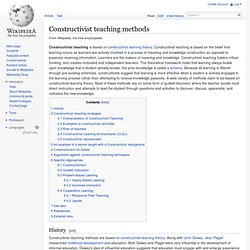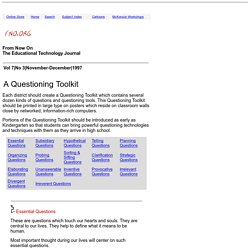

Plickers. Wrapping Up A Large Online Course. This fall I’ve been teaching a large-scale online course for the first time.

I’ve written a series of posts here about my experiences, and particularly what works and hasn’t worked as I’ve addressed both the challenges of scale and the problems inherent in teaching one of the only online courses offered as part of a traditional face-to-face degree: With the end of the semester rapidly closing in, it’s time to take a look back and prepare for the future. Online courses are often subject to changes in scale (I taught 130 this semester, and the course will be capped at 200 next semester) and demand continual reflection and revision thanks to changing technologies, updating content, and addressing problems in each iteration.
The False Promise of Classroom Technology - Businessweek. The cover story of Life magazine on Oct. 16 was “U.S.

Schools: They Face a Crisis.” Of course, there’s pretty much always a sense of crisis in education—in fact, the Life story dates from 63 years ago: Oct. 16, 1950—and it isn’t limited to the U.S. Two weeks ago, the U.K. announced it would revamp its curriculum and testing for 16-year-olds yet again, on the basis (yet again) that the previous system wasn’t rigorous enough. Both the American and British school systems could surely do better. The trouble is that the perpetual sense of educational crisis leads to a search for quick fixes—the latest of which is throwing Information Technology at the classroom. Interactive Learning Sites for Education - Home.
Welcome to a new kind of training platform. Cheat Sheets & Quick References. Constructivist teaching methods. History[edit] Constructivist teaching strategies[edit] Characteristics of Constructivist Teaching[edit] One of the primary goals of using constructivist teaching is that students learn how to learn by giving them the training to take initiative for their own learning experiences.

Questioning Toolkit. Essential Questions These are questions which touch our hearts and souls.

They are central to our lives. They help to define what it means to be human. Most important thought during our lives will center on such essential questions. What does it mean to be a good friend? 6 Steps To Get Started With Gamification. Getting started with gamification is easier than you think.

A playful attitude and curiosity prepare you for understanding the power of gamification. If you are interested in getting started with gamification check the following 6 steps! Gamification has seen a lot of buzz in the past year. How to ruin your students' weekend in three easy steps. I live just far enough north to catch some snow and ice a couple of times a year, but far enough south that people still panic when it happens.

So when we got 2-3 inches this Wednesday my university administration shut the whole place down for two days. This is problematic for me because my class meets once a week for a 2’40″ block, meaning my students just lost a week’s worth of content. And in the second week no less! I was going to cover evolution by natural selection in order to set up the next three weeks of study. I have already got my semester totally planned and I don’t want to mess with it.
Starting at the Ending. Want more teaching tips?

Browse the Pedagogy Unbound archives. Search the Web for "first day of class activities" and what you'll find are a lot of gimmicks: long lists of icebreakers and all manner of unusual and goofy ways to get students to read the syllabus. Most of the suggestions take for granted that teachers need to try to "hook" students on the first day. We've got a few of these tips on Pedagogy Unbound, including a suggestion that you block off the back row of seats with caution tape (to get students to think about why they gravitate to the back of the classroom). In fact, there are good reasons why teachers may want to begin with activities that differ widely from the tone of the rest of the semester.
Did your college professors ever ask you to reflect on your own learning?